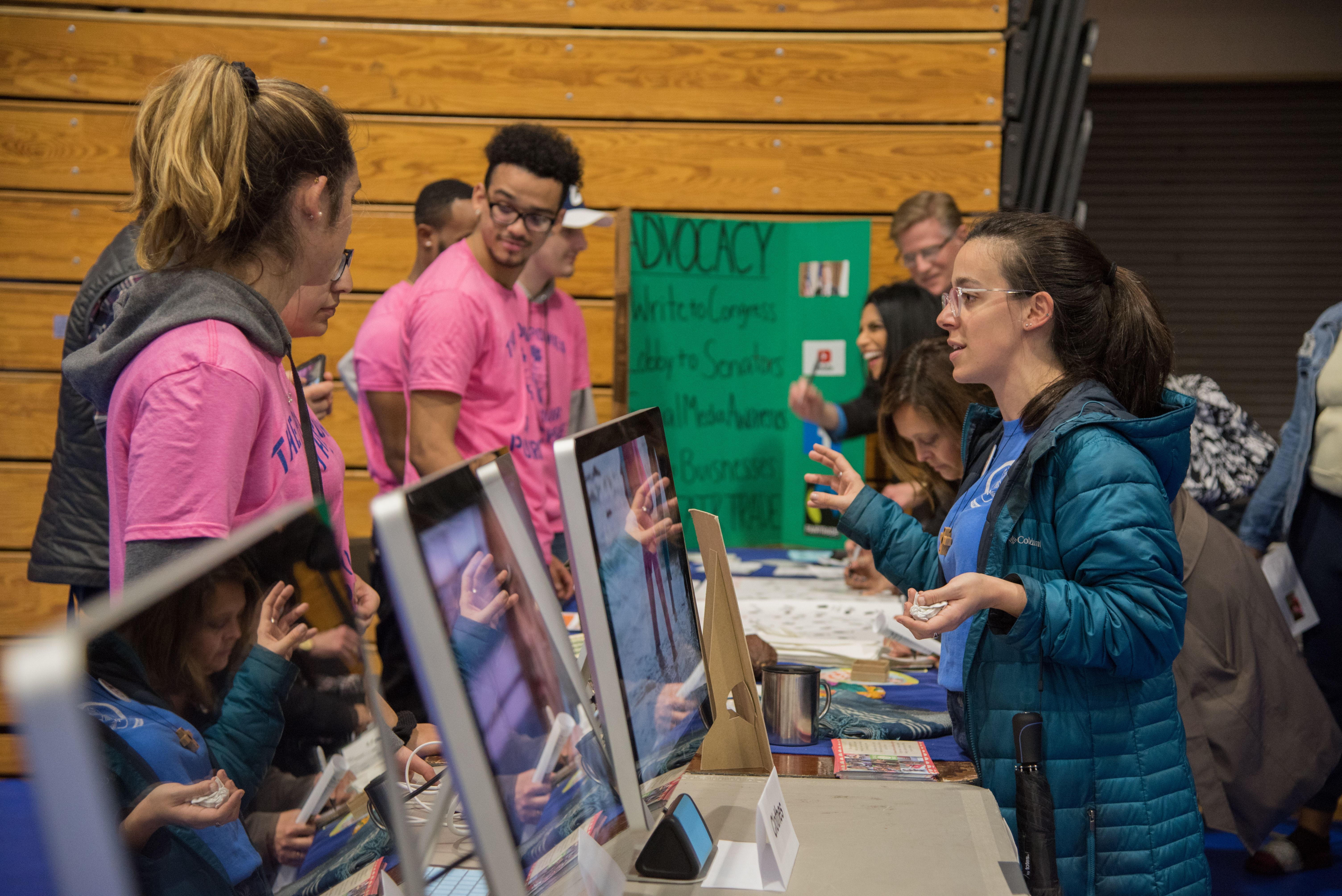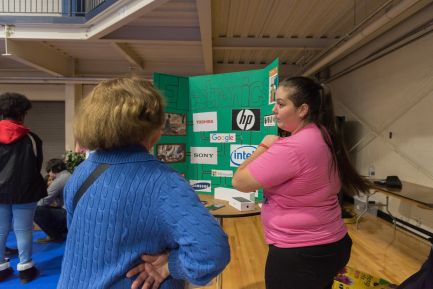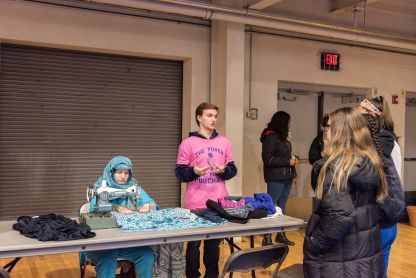
Many people love to shop at Walmart. The store is cheap and most locations are open 24/7. However, has anyone ever thought about why exactly are the products often so cheap? Students at Cabrini University came to realize that for us to get products at cheap prices sometimes workers must be exploited or even enslaved in poor countries. Modern slavery brings down the cost of our consumer goods.
Chocolate, for example. Most of the big-name chocolate companies get their beans from West Africa. Beans from the Ivory Coast often are picked by child labor. Cabrini students in an ECG 100 course were able to learn about the Ivory Coast and what, if anything, major companies like Hershey are doing to rid their supply chains of slavery or child labor.
The clothes on shelves at a local Walmart were also exposed as being made by women in Bangladesh working in very poor conditions. This surprised many students. The students learned that it’s not just Walmart. Many consumer products, even high-end products like jewelry and computers, might contain elements produced by slave labor.
Natalie Fritz, a freshman from Collegeville, Pennsylvania, was just like many freshmen starting college. Fritz decided to come to Cabrini to play lacrosse and also wanted to major in Communication. She did not think her freshman courses would dig so deeply into global issues and that she would become personally involved.
“Personally, before Cabrini, I just cared about passing classes, making friends, and creating memories,” Fritz said. “Learning about modern-day slavery makes me realize that a lot of my friends and family are clueless to the world.”

The Engagements with the Common Good (ECG) class called The Power of your Purchase at Cabrini has drastically changed and informed the way students think about the products they buy and how they advocate against modern slavery.
Starting the beginning of the semester, students in the communication learning community (LC) learned about modern slavery that is used to make phone parts, chocolate, clothing and more.
“At the beginning of the class, I did not think modern-day slavery existed still at all,” Fritz, a member of the LC and digital communication major, said. “We focused and pretty much dissected the harsh reality of how clothing, chocolate, and technology are currently, in many situations, made by children and in some cases the children are paid $3 dollars or less a day.”
When first learning about modern slavery, the students took a while to understand the domino effect. Because this topic is not covered in high schools, many were in denial.
“My eyes opened to a wide situation across the globe that is modern slavery,” David Pacholick, member of the LC and digital communication major, said. “Now I know of the shadowy empire that is right under our noses.
After they spent six weeks learning about slave or exploited labor in the chocolate, technology, and clothing industries, they created a simulation for Cabrini Day. That was when the concept clicked for many.
The class decided to best portray what they learned through a simulation.
“Once everyone had a grasp of what they were doing, the room became an area where ideas flourished,” Pacholick said. “Many people want to express the ideas they had for each group in different ways. For example, some people wanted a more theatrical approach while others wanted to present factual evidence. Looking at the end of the planning period, we all added what we wanted in this project.”
This year’s class thought it would work best to bring alive the harsh reality of some children being forced into slavery.
“I would like participants to take away at least one key detail from our simulation,” Pacholick said. “Yes, modern slavery does exist and yes, you can make a difference to help end it.”
Classmate Fritz had a similar goal after participants went through the simulation to then get to advocacy.

“Bottom line is, slavery is still alive today,” Fritz said. “Some people think that they can turn their head and look away but making uneducated purchases can actually in some ways support the unethical supply chain. I want people to understand that our actions result in consequences.”
For about four months, the students’ views of modern slavery have both surprised them but also encouraged them to become advocates.
“I definitely feel like being in this class, I gained so much knowledge that I could share with others,” Grace Fox, a member of the LC and digital communication major, said. “I talk about this class with my family all the time and they are shocked by the facts I tell them. I also think it’s so amazing how much social media can play a role in bringing awareness. Like instead of posting selfies or food, you can spread the word about important topics.”
Knowing about these situations could change many futures that are stuck in the slavery system.
“I want my family and those going through our simulation on Cabrini Day to understand that as consumers, many of our day-to-day products are made by slaves,” Fox said. “However, we can change that by being educated and advocates!”
The communication learning community strove to help incoming freshmen not only adjust to college but also educate them to become advocates in social justice issues while learning how to use digital and social media to spread the word.


